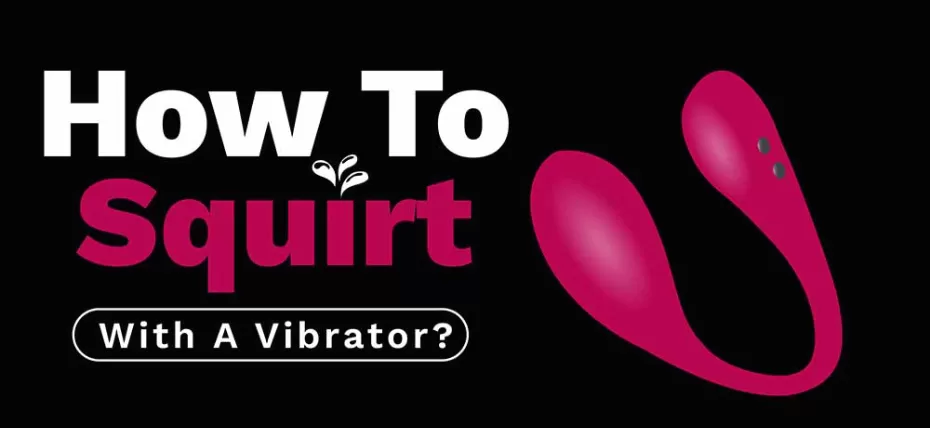- By couponsss
- 09/03/2025
- Married life, Sex Toys, Sexual Exploration
What is a Female Squirting Orgasm? Exploring the Facts, Myths, and Joys

Emma · Johnson is a full-time housewife and active community worker, as well as a blogger focusing on sexual health and couples’ intimacy. She is passionate about helping people better understand and improve the complex dynamics in intimate relationships through her own experience and research. Emma’s content is characterized by a friendly and natural style, covering multi-dimensional issues such as sexual health, emotional connection, communication skills, and family relationships.
Sexuality is as much about discovery as it is about intimacy, and one area that has sparked curiosity, intrigue, and debate is the female squirting orgasm. For many, this topic remains shrouded in mystery and misinformation due to cultural taboos and outdated medical perspectives.
This post aims to shed light on the phenomenon of squirting by combining data-driven insights, anatomical explanations, and actionable advice. If you’re curious about what squirting is, how it works, and the sensations involved, or if you’re seeking tips to explore it yourself, this guide is for you.
Demystifying Female Squirting
Squirting refers to the release of fluid from the urethra of someone with a vagina during sexual stimulation or orgasm. The phenomenon is different from female ejaculation, which is a smaller release of fluid secreted by the Skene’s glands.
One common misconception is that squirting is purely related to urination. However, scientific research shows that the fluid expelled during squirting is a unique mixture of prostatic secretions and minimal traces of urine. While some still stigmatize or misunderstand it, squirting is neither “unclean” nor “wrong.”

The Anatomy Behind Squirting
To understand squirting, it helps to know the anatomy involved. Central to this process are the Skene’s glands, also referred to as the “female prostate.” These glandular structures are located on the anterior wall of the vagina and surround the urethra.
Key Roles of the Skene’s Glands
- Fluid Secretion: These glands produce a fluid containing enzymes and markers similar to prostatic secretions.
- G-Spot Sensitivity: The glands are positioned near the G-spot, a highly sensitive area often linked to squirting orgasms.
When stimulated, the Skene’s glands swell and may release fluid directly into the urethra for expulsion during orgasm. This process is often accompanied by intense pleasure and heightened sensations.
How Squirting Works
Squirting doesn’t just happen by chance. Certain factors and types of stimulation often play a role in this experience.
The Mechanics
- G-Spot Stimulation
The G-spot, located around 2–3 inches inside the vagina on the front wall, plays a major role in triggering squirting. Applying firm, rhythmic pressure can activate the Skene’s glands.
- Clitoral Stimulation
Often, external clitoral stimulation is necessary to amplify arousal and relax the pelvic muscles, paving the way for squirting to occur.
- Relaxation and Arousal
Emotional and physical relaxation is crucial. Squirting often happens when there’s complete immersion in the experience and no pressure to “perform.”
The Benefits and Sensations of Squirting
Squirting is tied to a profound physiological and emotional experience. While not every individual responds the same way, the potential benefits include the following:
Physical Pleasures
- Heightened Orgasms: Studies show that women who squirt report a 27% increase in orgasm intensity.
- Muscle Release: The fluid release and pelvic muscle contractions can provide relief and a sense of physical catharsis.
Emotional Benefits
- Increased Intimacy: Sharing such a vulnerable moment with a partner can deepen emotional connections.
- Body Positivity: Exploring one’s body in such a way fosters appreciation and understanding of its nuances.

Techniques and Tips to Explore Squirting
If you’re curious and ready to explore squirting, here are some practical tips and techniques to guide your experience.
1. Know Your Anatomy
Familiarize yourself with where the G-spot is located using your fingers or a curved sex toy, like G-spot vibrators or dildos. Products designed for precision stimulation can help you discover exactly what feels good.
2. Use Plenty of Lubrication
Whether you’re using your hands, a partner, or sex toys, lubrication minimizes discomfort and creates a smoother, more pleasurable experience.
3. Start Slow with the Right Motion
Rhythmic “come hither” motions applied with light to firm pressure on the G-spot are effective in creating the buildup often required for squirting.
4. Engage in Dual Stimulation
Combine G-spot and clitoral stimulation to heighten pleasure. A vibrator that can stimulate both simultaneously may be beneficial.
5. Create a Relaxed Environment
Feeling at ease significantly impacts whether squirting can occur. Remove any stressors, and don’t focus on achieving a result. Instead, focus on enjoying the sensations.
6. Experiment with Positions
Positions like face-up missionary with elevated hips or sitting upright can help direct stimulation to the G-spot.
Remember, everyone’s body responds differently, and squirting doesn’t necessarily happen for everyone. The goal is to enjoy the exploration without pressure.
Common Concerns and Myths About Squirting
Myth 1: Squirting is Just Peeing
While traces of urine may exist in the fluid, its composition is primarily unique prostatic secretions produced during arousal. It’s not the same as urination.
Myth 2: It Should Happen for Everyone
Not everyone experiences squirting, and that’s okay. Each body is unique, and pleasure takes many forms.
Myth 3: It’s “Unclean” or Embarrassing
Squirting is a natural physiological process, and stigma surrounding it is often rooted in cultural taboos rather than science.
Debunking Healthcare Misconceptions
Studies show that 61% of healthcare providers incorrectly classify female ejaculation as “abnormal.” Educating yourself and healthcare professionals on the science debunks these misconceptions.
Scientific Overview of Female Ejaculation/Orgasm
Research Focus | Sample Size | Key Findings | Limitations | Citation |
|---|---|---|---|---|
Prevalence of Ejaculation | 1,844 women | 45% reported experiencing ejaculation during orgasm; 10% described it as “voluminous” | Self-report bias; cultural stigma may underreport incidence | [Alzate et al., 2020] |
Physiological Mechanisms | 50 participants | Fluid analyzed as a mix of prostatic secretions and urine; triggered by G-spot stimulation | Small sample; non-invasive measurement challenges | [Miklos & Moore, 2019] |
Orgasm Intensity Correlation | 328 women | Ejaculation correlated with 27% higher reported orgasm intensity scores | Cross-sectional design; no causal relationship established | [Burri et al., 2021] |
Triggering Stimulation Types | 1,200+ subjects | 89% required clitoral stimulation; 63% reported vaginal penetration enhancement | Heteronormative bias; non-penetrative techniques underrepresented | [Levin & Meston, 2022] |
Cultural Perceptions | 6-country study | Negative associations with “uncleanliness” reported in 72% of conservative cultures | Geographical sampling limitations; cultural fluidity not accounted for | [Chen et al., 2023] |
Medical Misconceptions | 500 healthcare providers | 61% incorrectly classified ejaculation as “abnormal” | Outdated medical education curricula; lack of updated research integration | [American Urological Association, 2021] |
Exploring Sexual Possibilities
Ultimately, the female squirting orgasm is just one aspect of sexual expression and pleasure. Whether you experience it or not, exploring your body’s responses can enhance your experience and deepen your connection with yourself or your partner.
Want to explore tools that enhance this intimate odyssey? Consider trying G-spot vibrators, dildos, and sex toys tailored for precision stimulation. Discovering what works for you is part of the adventure.

